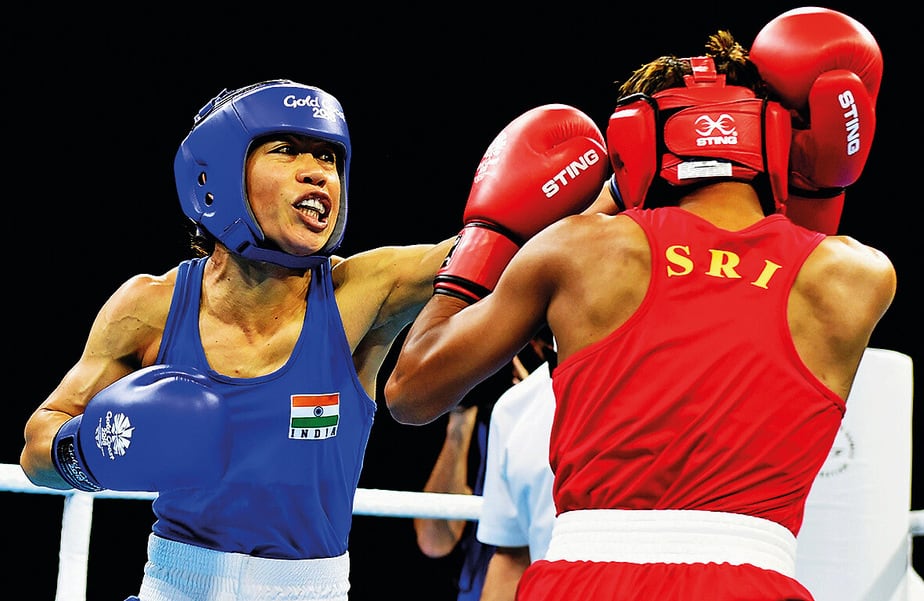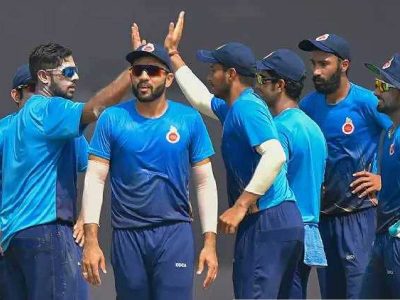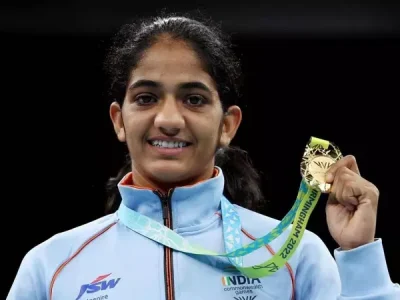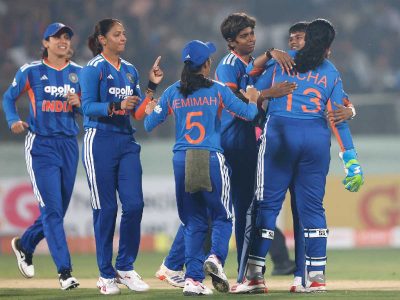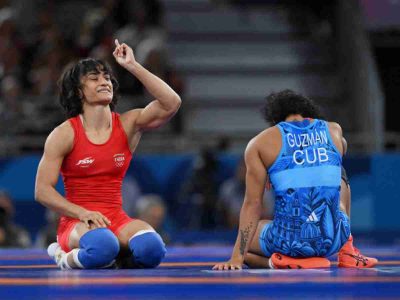From Manika to Saina, women led the way at CWG. Women are clearly making their mark in the international sporting arena
Traditionally, India’s sporting history has always been male dominated. Fortunately, the emergence of few star female players in the last few years has signalled a major shift in this sphere. Gold Coast 2018 was no different.
The recently concluded Commonwealth Games held from April 4 to 15 in Australia have once again proved that woman power is lightning up stadiums. Fifty per cent of all golds won by India were brought in by our female athletes. And mind it, all these medals have come from quite diverse sports, indicating emergence of great female domination across categories.
Out of the total number of 66 medals won Down Under, it was women’s dominance which helped India clinch third spot, including 26 gold, 20 silver and 20 bronze. Notably, 31 (28 individual and three mixed team events) out of total 66 were our female athletes’ contribution, either individually or in a combined effort.
In fact, if there was one single big superstar emerged out of CWG this time around, it was none other than Table Tennis’ new queen Manika Batra. She not only sent shock waves around table tennis world by beating world No. 4 world No. 4 Tianwei Feng twice during the campaign but contributed the most (two gold, one silver and a bronze) by an Indian athlete at Gold Coast.
This has been India’s second-best performance at the Games, following their 101-medal haul at the 2010 Delhi edition. In fact, India ended up with two more medals than the last edition in 2014 Glasgow Games.
No equality
There are also naysayers who have arguments like “Men’s events are much tougher than the women’s one”.
Going by their logic, to offer equal number of medals — out of total 275 medals, 133 each for men and women while remaining nine for mixed team events — was a mistake because compared to boxer Mary Kom who was assured of a medal after winning just one bout by virtue of having just five contestants in the draw, her male colleagues had to win at least three bouts to earn a medal.
Despite all these arguments, India’s golden girls like Saina Nehwal, Manu Bhaker, Manika Batra, Vinesh Phogat, MC Mary Kom, Tejaswini Sawant, Shreyasi Singh, Heena Sidhu, Punam Yadav, Sanjita Chanu and Mirabai Chanu took the sporting world by storm.
In the end, India bagged most number of 16 medals in shooting, followed by the wrestlers (12), weightlifters (9), boxers (9), table tennis (8), badminton (6), athletics (3), squash (2) and para-power-lifting (1).
Lady luck
Had it not been for PV Sindhu’s silver or Sakshi Malik’s bronze in Rio, India would have fired blanks during the 2016 Olympic Games. This time around, men have caught up in big way. But then the role of women athletes can’t be discounted.
In fact, TT ace Manika would be a top contender for the Indian athlete of the Games award because of what she has achieved for her country. In a game where Indian paddlers hardly have made any mark in the past, this 21-year-old triumphed over world No. 4 and multiple Olympic medallist, twice to say the least.
The 16-year-old shooter, Manu Bhaker, is another one to create a space for herself in the world of shooting by winning 10m air pistol gold with a Games record to boot. Such an achievement at such young age has compelled the pundits to gush that India may just have found its next Olympic champion after Abhinav Bindra.
Experienced 27-year-old Shreyasi Singh can’t be missed here because of her hunger to get onto the top of double trap event. After finishing outside the podium in 2010, Shreyasi managed silver at the 2014 Glasgow Games before now winning the coveted gold.
She is a perfect role model for new-age Indian women’s determination and perseverance along with boxing legend Mary Kom. Mother of three and winner of London Olympic bronze, Mary Kom’s never-say-die spirit was at its best during the CWG.
On the wrestling mat, Vinesh Phogat was the star of Indian campaign by winning gold in 50 kg freestyle event. India’s best bet Sakshi, however, suffered a setback and had to settle for bronze in the 69-kg category. Pooja Dhanda (57 kg) picked up silver along with Babita Phogat (53 kg) while Divya Kakran (68 kg) and Kiran notched a bronze each on their CWG debut.
The efforts of discus thrower Seema Punia, who won a silver in the discus throw, must be lauded here for her fourth successive CWG medal. In a power game where not many have lasted for this long, Seema still has the next Asian and Olympic Games in her sight.
Last but not the least, it was a kind of rebirth for shuttler Saina by staging her most famous victory in recent times over her own country-mate PV Sindhu to win gold. There were question marks over Saina’s form after her return from injury post Rio Games. There is no denying that after her younger partner Sindhu overtook her in the rankings last year, Saina’s confidence had certainly taken a hit.
But in Gold Coast, Saina answered all her critics with a superlative show as she helped India win the mixed team championship for the first time in the history before bagging the individual crown.
And who knows in the times to come, it is this great Saina-Sindhu rivalry which could bring India a big medal from 2018 Asian Games and 2020 Olympics!
Golden girls:
Saina Nehwal: Women singles badminton.
Manika Batra: TT women singles.
Vinesh Phogat: Women wrestling freestyle (50 kg Nordic).
MC Mary Kom: Women 45-48 kg category Boxing.
Tejaswini Sawant: 50m Rifle 3 Positions Shooting.
Shreyasi Singh: Double Trap women Shooting
Heena Sidhu: Women 25m Pistol Shooting.
Manu Bhaker: Women 10m Air Pistol.
Punam Yadav: Women 69 kg Weightlifting.
Sanjita Chanu: Women 53 kg Weightlifting.
Mirabai Chanu: Women 48 kg Weightlifting.
Silver winners
PV Sindhu: Badminton singles
Dipika Pallikal and Joshna Chinappa: Doubles Squash.
Dipika Pallikal and Saurav Ghosal: Mixed Doubles Squash
Manika Batra and Mouma Das: Women Doubles TT.
Anjum Moudgil: 50m Rifle 3 Positions.
Pooja Dhanda: 57 kg Wrestling.
Seema Punia: Discus Throw.
Mehuli Ghosh: 10m Air Rifle.
Heena Sidhu: 10m Air Pistol.
Tejaswini Sawant: 50m Prone Shooting.
Babita Kumari: 53 kg Wrestling
Bronze winners
Manika Batra and G Sathiyan: Mixed Doubles TT.
Ashwini Ponnappa and Sikki Reddy: Women Doubles Badminton.
Sakshi Malik: Freestyle 62 kg Wrestling.
Divya Kakran: Freestyle 68 kg Wrestling.
Navjeet Dhillon: Discus Throw.
Kiran: Freestyle 76 kg Wrestling.
Apurvi Chandela: 10m Air Rifle.

